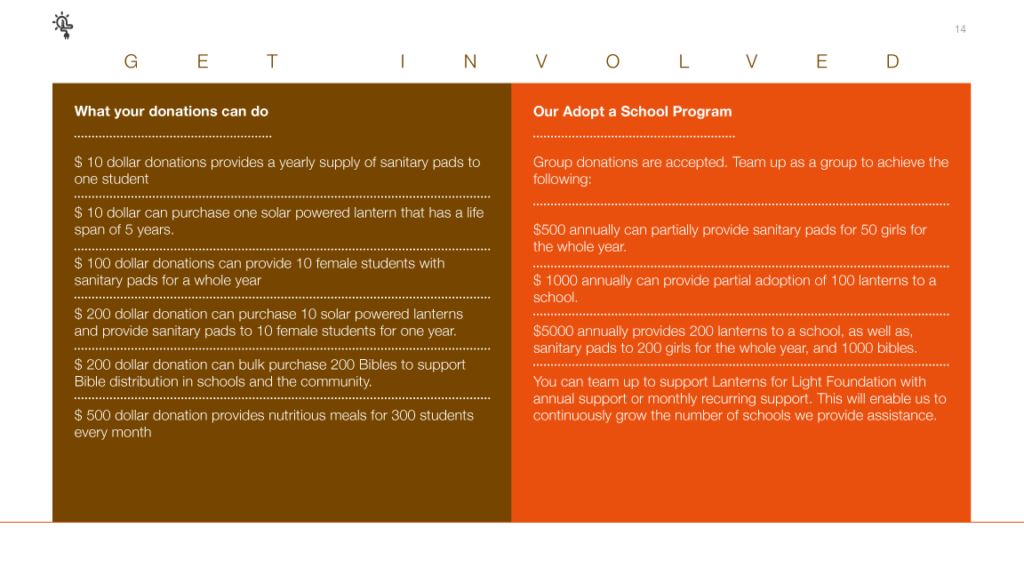One of the most formative challenges for Kenyan students is the lack of access to reliable and inexpensive lighting to complete their school work at home. Insufficient light can cause a student to get behind in their studies and, too often, become so discouraged that they do not complete their primary education at all. Lanterns For Light was founded on the realization that an affordable, solar charged reading lantern could solve this problem and change the entire course of a child’s future. Solar-power lanterns will ease the financial burden of the family buying the kerosene to use for lighting at night. It will also give the students additional time to read that will positively impact their academic performance and will make them more independent. Lack of proper lighting is directly linked to poverty, health issues, and literacy. In addition the use of kerosene has also been linked to accidents of fire where houses have been burned down and even death has resulted.
When combined with a desk that seats four children who live nearby, the light spreads exponentially. That is our goal.
To identify practical solutions to directly impact as many Kenyan students as possible and enable them to pursue a better life through education.
Another way our organization is removing barriers for young female students is by providing sanitary pads. Young women often miss school once a month due to the lack of feminine hygiene products, again making it difficult for them to keep up with their studies. When this happens for an extended period of time the young lady may miss nearly a quarter of the year of schooling. The gift of sanitary products removes yet another barrier between her and her education.
While there are many challenges facing Kenyan students today. From inexpensive light sources to a food pantry, we are committed to making a difference. Lanterns for Light projects are always focused on providing funds or practical gifts in the name of Jesus Christ to remove as many of the challenges preventing young men and women from completing their education as possible.

